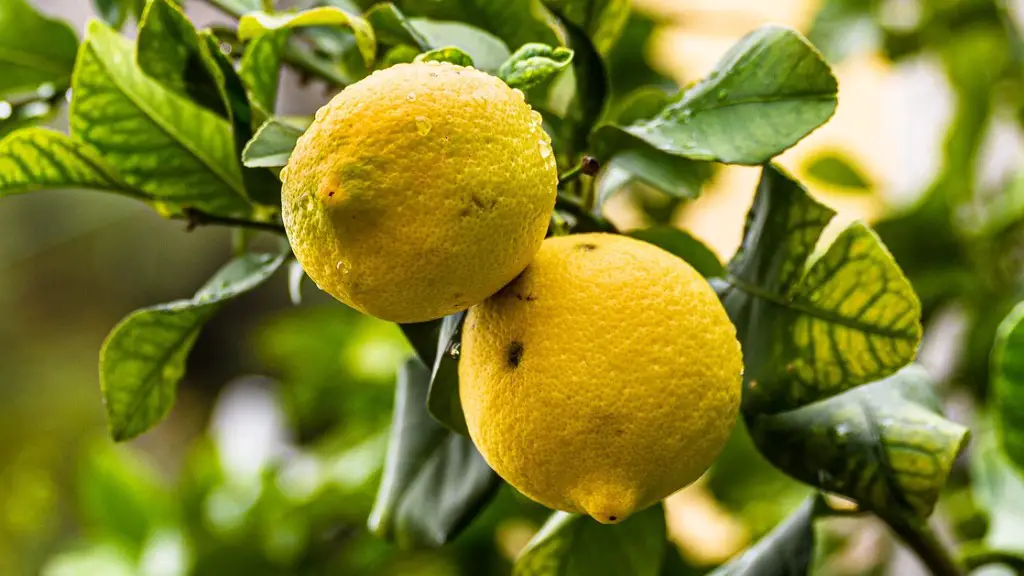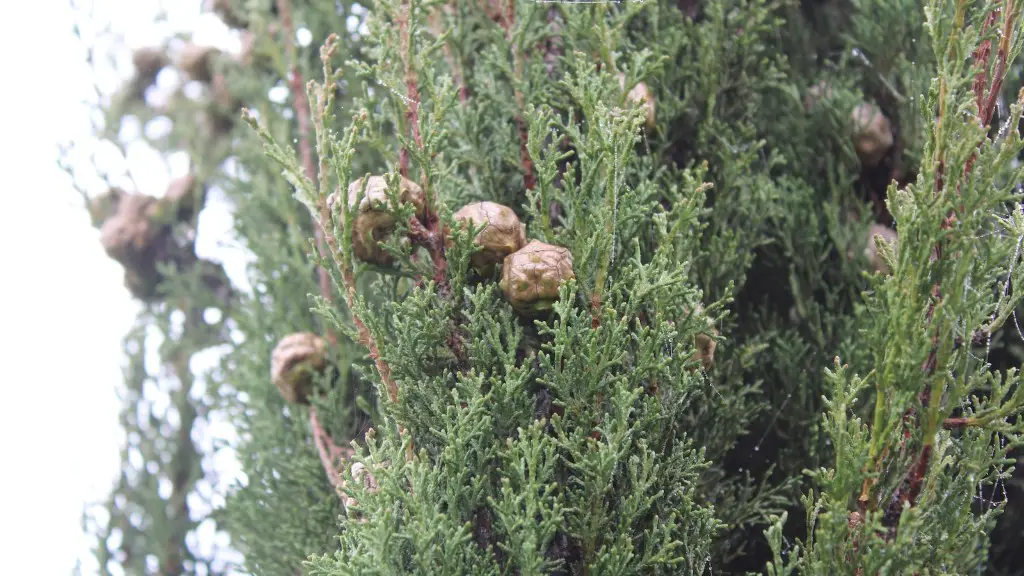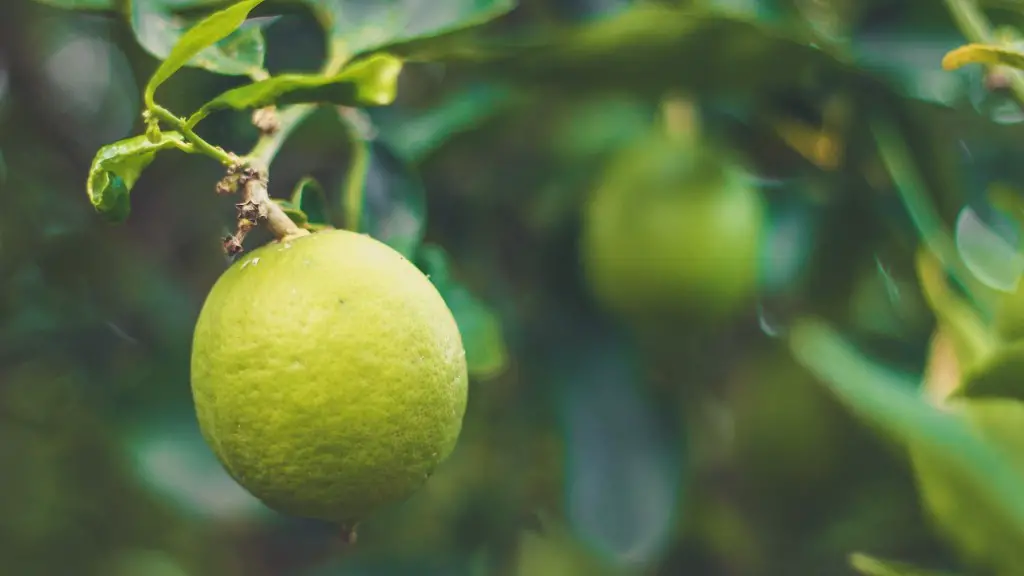No garden is complete without a lemon tree. Taking care of lemon trees is essential to ensure they produce delicious fruit. Pruning your lemon tree regularly is a great way to help it grow, but knowing when to prune it is key. Understanding the right time to prune a lemon tree and how to do it properly will help keep your tree healthy and maximize your yield of lemons.
Mature lemon trees should be pruned in early spring just before the new growth starts. Before pruning, take the time to inspect the tree for any dead or damaged branches. Look for signs of pests or disease, such as leaf discoloration, to ensure you don’t spread the problem while pruning. Once you have identified any issues, they should be addressed first.
To promote healthy new growth and better fruit development, pruning should focus on keeping the tree shapely. Start by removing any dead, damaged or diseased branches. You can then reduce the size of the tree by selectively removing a few branches or cutting off the ends of longer branches. Don’t be afraid to reduce the canopy by up to one third its size. Lastly, make sure your pruning tool is clean and sharp to help mitigate potential plant damage.
In general, trees should be pruned no more than once a year. Over pruning can cause the tree to suffer from stress or dehydration. Keep an eye on your tree the following years after pruning to track its progress. Depending on the amount of pruning, it may be necessary to fertilize your tree before and after the pruning season to keep it nourished.
Feather pruning is another technique you can use in conjunction with more common pruning. This involves lightly cutting the tips of branches to reduce the length of the shoot while maintaining the natural shape of the tree. It is a great option for those trees that require minimal pruning and helps promote additional blooms and fruit.
Finally, you can top cut your lemon tree to remove larger branches and maintain its shape. This should only be done when necessary, such as when branches have grown too large or when the tree becomes too tall. Topping is when the top of the tree is cut, leaving the branches at a shorter height. Do this cautiously, as topping lemon trees can negatively affect their health and growth.
Foliar Feeding for Lemon Trees
Foliar feeding can be a beneficial supplement for lemon trees. This technique involves spraying the leaves of the tree with a nutrient-rich solution to promote healthy growth and higher yields. The best time to use foliar feeding is in the late winter or early spring months, as this gives the tree a chance to absorb more nutrients and prepare for the season ahead.
When applying the foliar solution, choose a mild and non-alkaline solution in order to prevent leaf burn. Additionally, it is important to avoid doing this during the hottest times of the day, as this will increase the chances of damaging the leaves. Be sure to use organic products when mixing your solution, as the synthetic chemicals in commercial fertilizers can often be damaging to plants.
Foliar feeding can be used together with other forms of pruning to give your lemon tree a better chance of thriving. This is particularly effective when dealing with a tree that has been neglected or is affected by a nutrient deficiency. The nutrients in the foliar spray provide an added boost for the tree and may help reduce the amount of traditional pruning and other forms of maintenance that need to be done.
If you are unsure about the best foliar feeding techniques for your tree, consult an expert or conduct research on the specific type of lemon tree. While foliar feeding can be beneficial for some types of trees, it may be inefficient or even hazardous for others. Knowing which techniques are best for your lemon tree is essential to ensure healthy growth and higher yields.
Irrigating Lemon Trees
Watering your lemon tree is a crucial part of taking care of it. Knowing how much and when to water will help your tree stay healthy and bear more fruit. Lemon trees need at least 1-2 inches of water each week so they can maintain proper growth and development. Keep an eye on your soil to make sure it is damp, but not soggy, during the humid summer months. In the winter months, you may need to reduce your watering to about 1 inch of water per month. Choose a deep watering method for your lemon tree instead of a light sprinkle or mist.
In addition to regular watering, fertilizing a lemon tree is important for promoting healthy growth and increased yields. The best time to fertilize your lemon tree is in the early spring or late summer. Choose a balanced fertilizer specifically for citrus to ensure your tree gets all the essential nutrients it needs to bear a large crop of fruit. The concentration of the fertilizer will vary depending on the age and size of your lemon tree; be sure to talk to an expert or read the instructions before applying any fertilizer.
Lastly, mulching is a great way to help your lemon tree retain moisture and reduce evaporation. Cover an area of at least two feet around your tree with a layer of mulch. This not only helps keep the soil moist, but also helps keep weeds from growing and competing with your tree for nutrients and light. Avoid mulching directly against the trunk of your tree to prevent molds and other diseases. Organic mulches are ideal for this, as they provide additional nutrition for your tree as well.
Dealing with Insects and Diseases
Unfortunately, lemon trees can be vulnerable to a variety of pests and diseases. As soon as you notice any signs of pests or diseases, you should take the necessary steps to mitigate the issue. If the problem persists, consult a professional or do more research to find an appropriate course of action.
Aphids are one of the most common pests that attack lemon trees. These tiny insects feed on sap and can cause leaves to yellow and branches to die. Keeping your tree healthy and free of debris can help reduce the chances of an aphid infestation. If you do notice an infestation, you may be able to remove the aphids using a strong spray of water or a pesticide specifically designed for citrus.
Fungi and fungal diseases can be another problem for lemon trees. Leaf spot and blight are two of the most common fungal diseases affecting citrus. Watering and mulching habits, as well as air circulation, should all be taken into consideration to reduce the chances of an infection. Applying a vinegar or oil solution may be beneficial, in addition to using a fungicide.
It can be difficult to know how to deal with pests and diseases when it comes to your lemon tree. Fortunately, there are resources available that can guide you along the way. Reading up on the types of pests and diseases affecting citrus trees and taking preventative measures can go a long way in keeping your lemon tree healthy.
Keeping Trees in Containers
Lemon trees can also be kept in containers, as long as they are cared for properly. The upside of this is that you don’t need to have a large garden to grow a lemon tree. This can be helpful if you have limited space or don’t have access to a suitable outdoor environment. Before planting the tree, be sure to pick the right pot and add a nutrient-rich potting mix to it.
When it comes to watering and fertilizing container lemon trees, be aware that they tend to need more frequent watering than those grown in a garden. In the summer months, you may need to water your tree up to twice a day. It is also important to use organic fertilizers for your tree every month or so to help keep it strong and healthy. To promote ventilation, reduce humidity, and discourage pests and diseases, it is a good idea to place your tree in an area that receives a lot of sunlight.
In sum, keeping a lemon tree in a container requires some effort, but it can be done. With proper care and attention, your lemon tree will not only produce delicious fruit but will also be a beautiful addition to your home.
Pruning Containers
Unlike trees planted in the ground, container lemon trees should not be pruned heavily. This is because container-grown trees tend to be small and compact, so large pruning cuts can damage them too much. If you do need to prune your tree, start by removing any dead, damaged or diseased branches. Then, selectively remove a few branches or cut off the ends of the longer branches. Make sure to use a sharp and clean tool to prevent any potential damage to the tree.
Another way to control the size of a container tree is tip pruning. This involves lightly removing the tips of the branches to reduce their length without affecting the tree’s shape. This technique works well when the tree does not need significant pruning. Not only will it help keep your tree the size you want it to be, but it may also encourage more blooms and more fruit production.
It is important to remember that your lemon tree will grow, regardless of whether it is planted in the ground or in a container. If you want to keep your tree small, be sure to prune it when necessary. With the right care and regular maintenance, your container lemon tree will be a rewarding and productive addition to your home.




